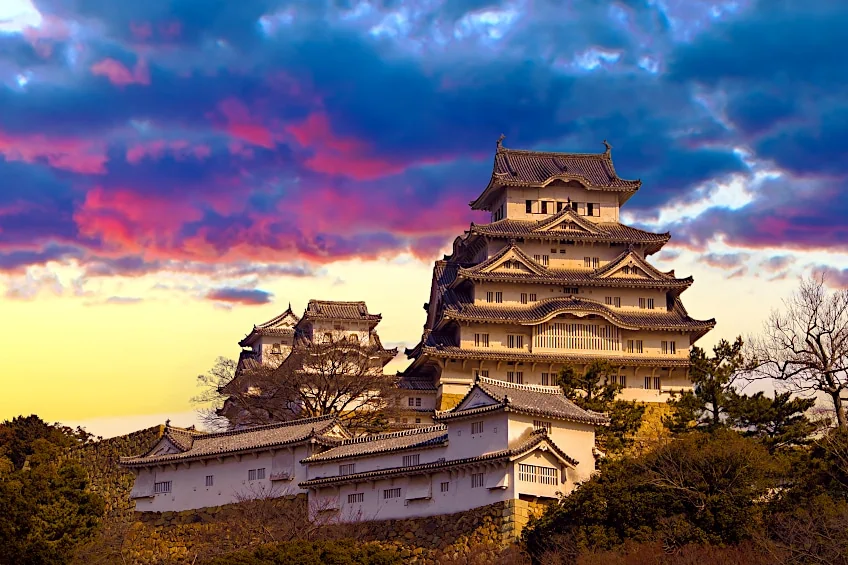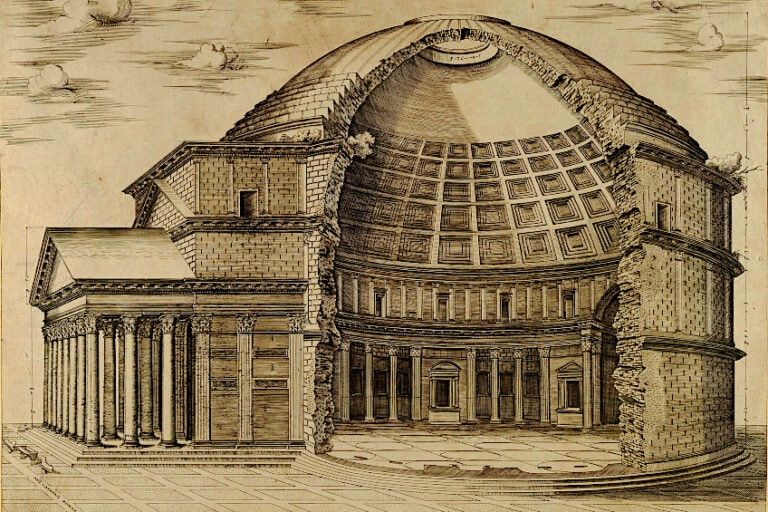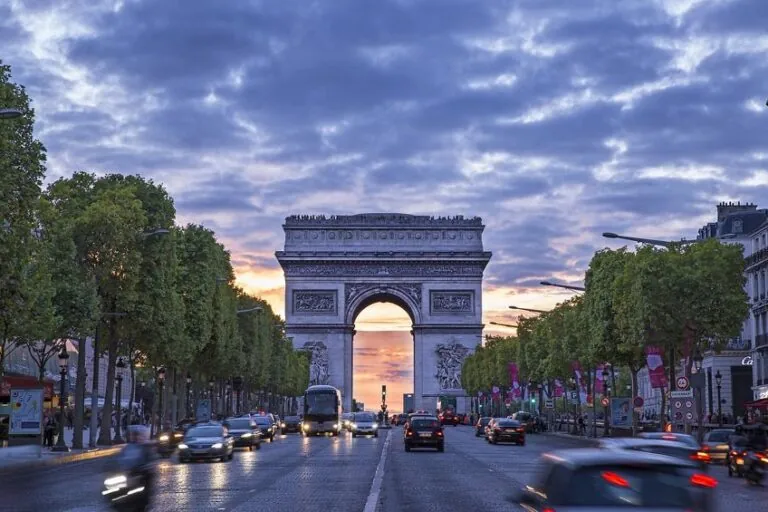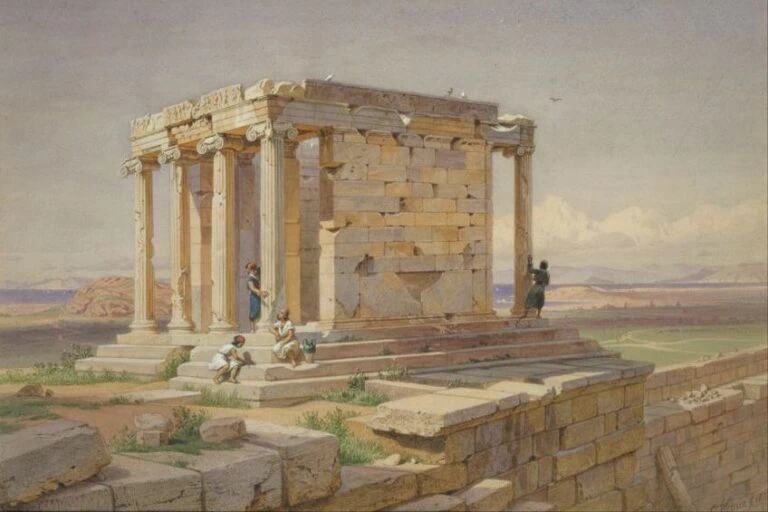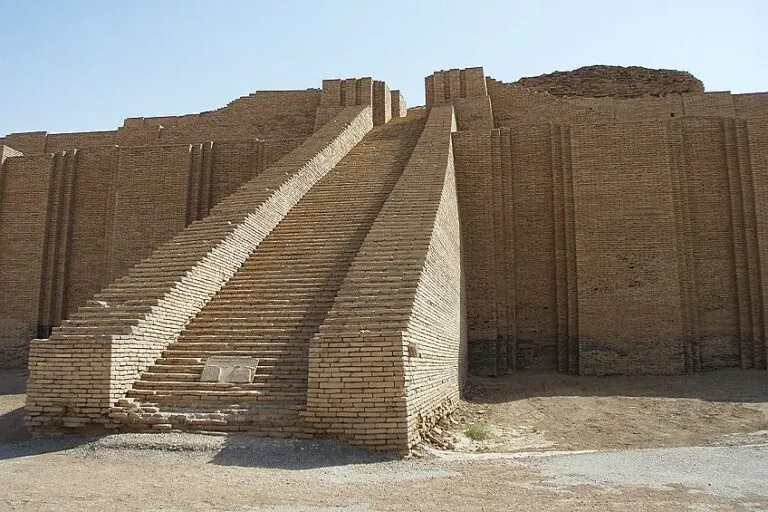Himeji Castle in Japan – History of an Iconic Japanese Fortress
The Himeji structure with moats surrounding it creates a striking image. The Himeji castle in Japan is often regarded as the country’s most impressive castle because of its intimidating grandeur and beauty and well-maintained, extensive castle grounds. The Himeji Castle’s interior and exterior have been exceptionally well-preserved, as it has never been subject to any of the fires, earthquakes, or wars that many other castles in the country were affected by, although there have been several renovation efforts that have helped maintain its appearance. Let’s find out more about the history and lore of this iconic structure and discover what is inside Himeji Castle.
Contents
The Himeji Castle in Japan
| Architect | Akamatsu Sadanori (1306 – 1374) |
| Date Completed | 1609 |
| Function | Castle |
| Location | Himeji, Hyōgo Prefecture, Japan |
The Himeji Castle in Japan is strategically located on the western route to Kyoto, the historic capital city. The earliest defenses were erected on the site in the 1400s and were subsequently expanded throughout the years by the numerous tribes who controlled the region. The Himeji structure with moats as it appears now was finished in 1609. It comprises around 80 structures distributed across various baileys and linked by gates and meandering walkways.
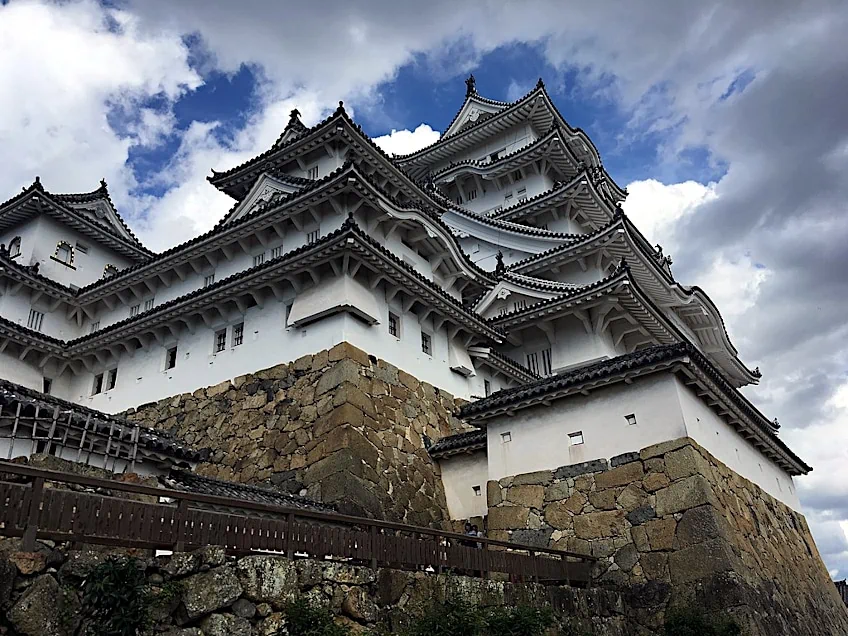 Himeji Castle keep tower; Christophe95, CC BY-SA 4.0, via Wikimedia Commons
Himeji Castle keep tower; Christophe95, CC BY-SA 4.0, via Wikimedia Commons
Himeji castle is also known as Shirasagi-jō or Hakuro-jō as it famously resembles a large white heron in flight.
A Brief History of the Himeji Castle in Japan
Himeji Castle originated as a fort in 1333 but was subsequently renamed Himeyama Castle. A feudal lord, Toyotomi Hideyoshi, rebuilt and extended the property in the late 16th century. Hideyoshi had commanded the construction of castles around Japan in an effort to promote the country’s unity. It eventually ended up in the possession of Ikeda Terumasa, a feudal ruler who transformed it into the huge structure we know today, retaining just some of the foundation. The fortress was built for battle at Terumasa’s request. He had been given the location as a reward for his achievements in multiple wars, and he quickly reinforced it.
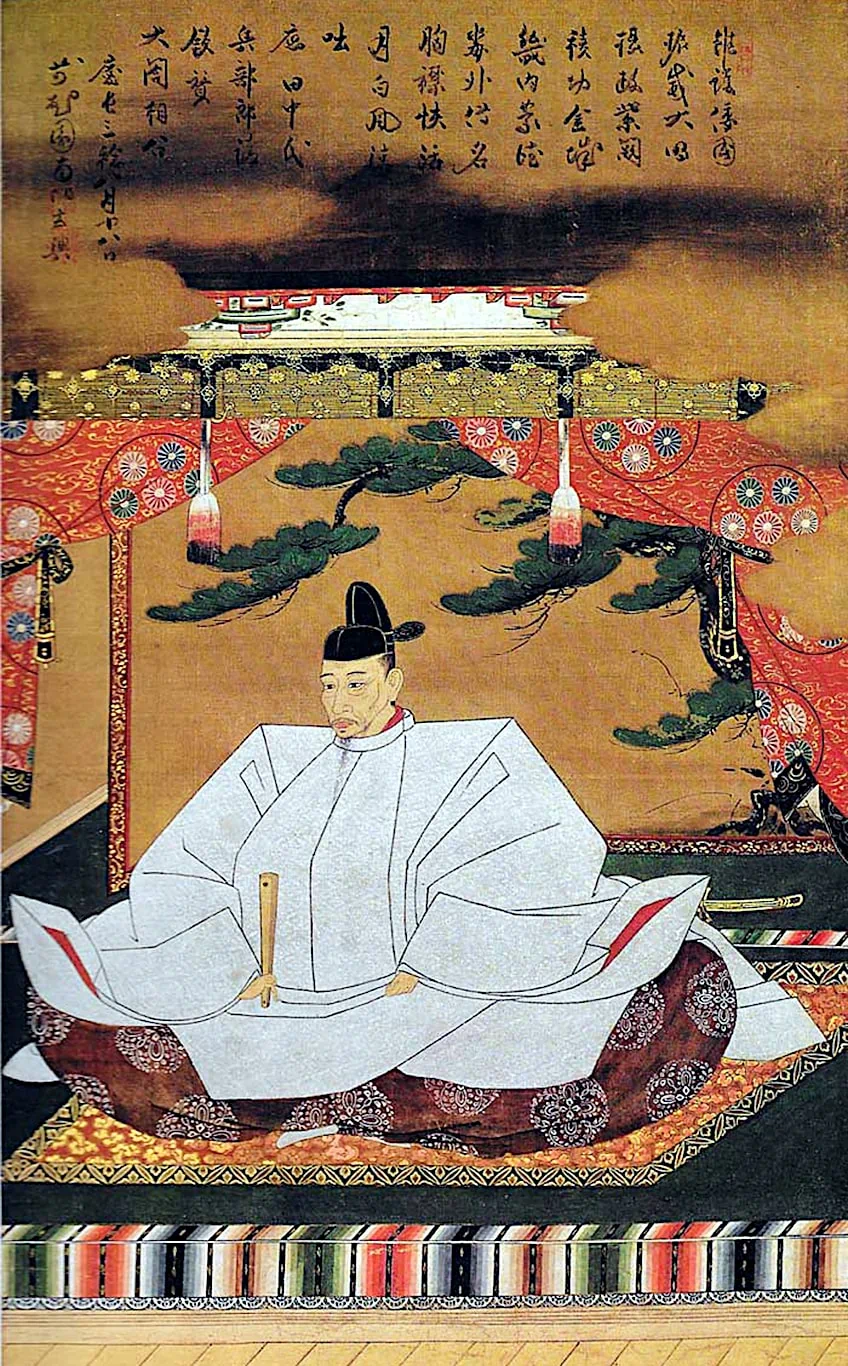 Portrait of Toyotomi Hideyoshi (c. 1601); English: Kanō Mitsunobu 日本語: 狩野光信, Public domain, via Wikimedia Commons
Portrait of Toyotomi Hideyoshi (c. 1601); English: Kanō Mitsunobu 日本語: 狩野光信, Public domain, via Wikimedia Commons
The castle was erected with extensive defense systems, including a new six-story tower at its center. Its most creative security feature was the maze-like road to the main tower, which was surrounded by moats and fortified by baileys, gates, walls, and turrets. This meant that invading forces were herded in a spiral manner around the castle, striking dead ends and leaving them open to attacks from above during their painfully slow march to the tower.
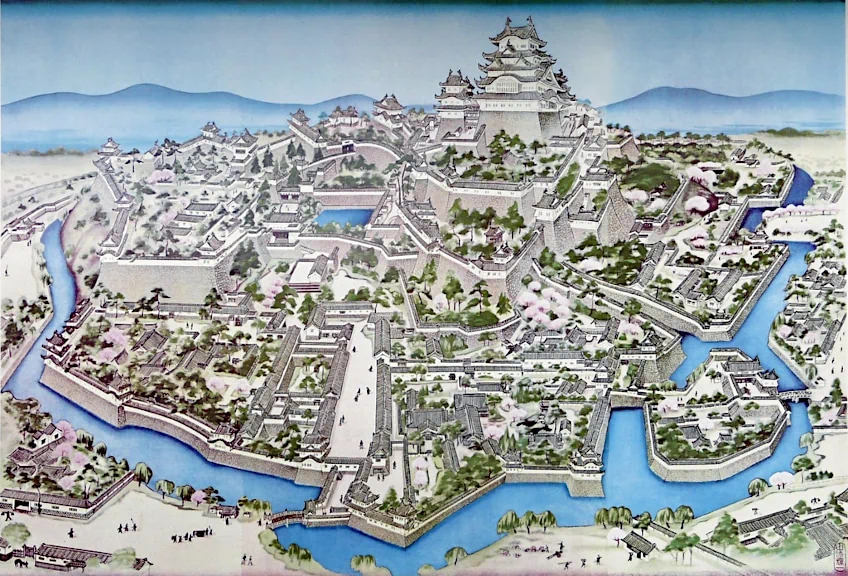 Painting of Himeji Castle (c. 1870); See page for author, Public domain, via Wikimedia Commons
Painting of Himeji Castle (c. 1870); See page for author, Public domain, via Wikimedia Commons
While the castle’s ingenious construction provided ample defense, these defensive aspects were never put to the test in battle. It was never attacked during its almost 300 years of operation as the focal point of a feudal dominion. However, the castle, which was bought in a public auction in 1871 when feudalism was abolished, suffered very minor damage during the bombardment of Himeji at the close of World War II in 1945. Some of the castle’s outside military facilities were replaced with civilian structures after the war. Otherwise, the castle retains its 17th-century appearance. Because of its excellent construction and good fortune, it is the biggest of the few remaining old Japanese castles.
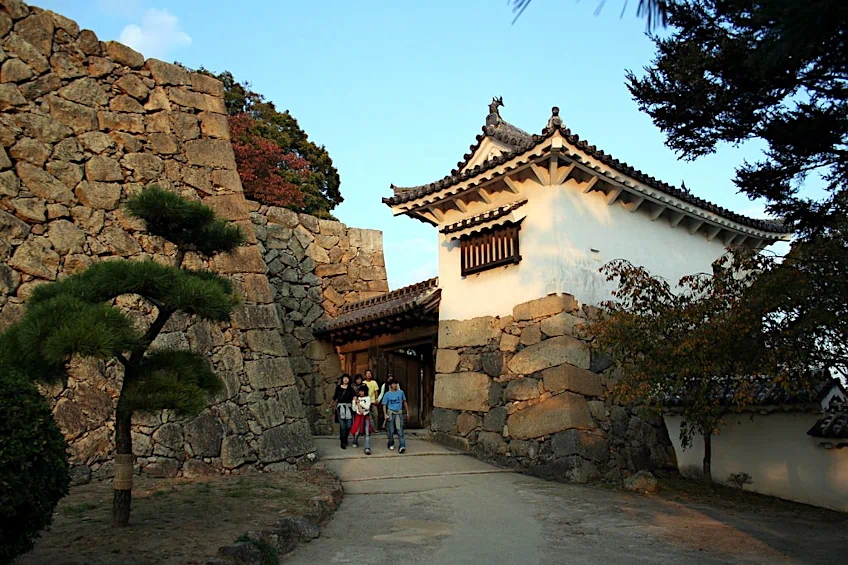 View showing the quality of Himeji Castle stonework; Corpse Reviver, CC BY 3.0, via Wikimedia Commons
View showing the quality of Himeji Castle stonework; Corpse Reviver, CC BY 3.0, via Wikimedia Commons
Unlike Himeji Castle, the majority of the Japan’s historically significant fortifications, from Kyoto’s Fushimi Castle to Osaka Castle, have been demolished or severely damaged, and currently only exist as reconstructions.
Architecture and Grounds of the Himeji Castle in Japan
Himeji Castle’s authenticity contributed to its designation as the very first UNESCO World Heritage site in Japan in 1993. It has also made it a popular tourist destination. Many tourists go there to enjoy the beauty of the gardens during the Cherry Blossom season as well as the colorful Autumnal bloom which occurs in October and November.
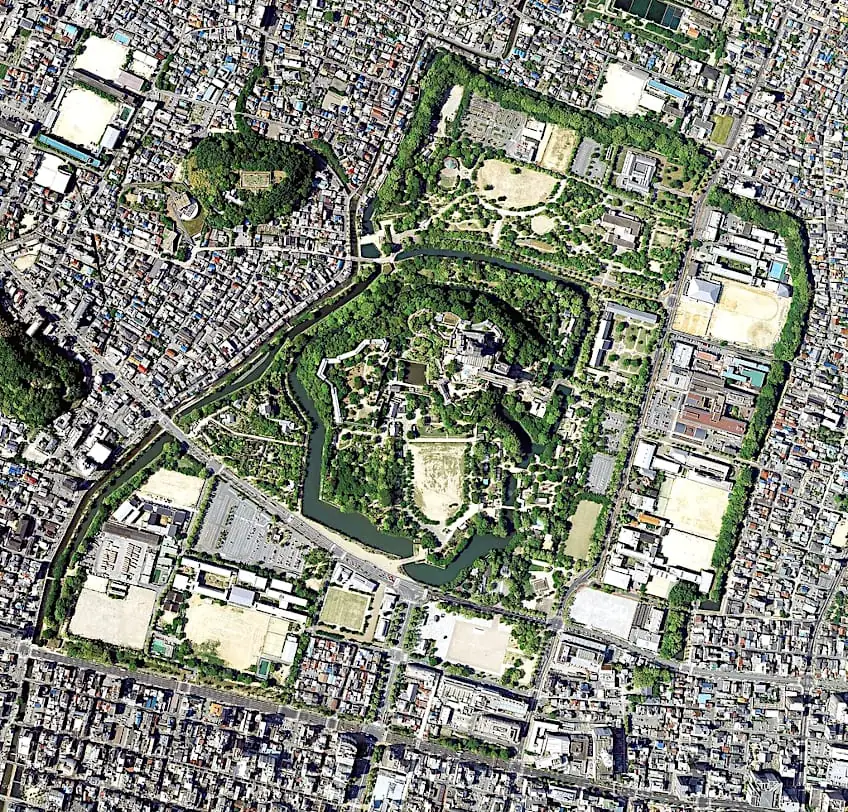 Himeji Castle as seen from above in 2010; Copyright © National Land Image Information (Color Aerial Photographs), Ministry of Land, Infrastructure, Transport and Tourism, Attribution, via Wikimedia Commons
Himeji Castle as seen from above in 2010; Copyright © National Land Image Information (Color Aerial Photographs), Ministry of Land, Infrastructure, Transport and Tourism, Attribution, via Wikimedia Commons
Gardens
The classical Japanese garden, Kokoen, which opened in 1992 in the castle complex’s southwestern corner, is the best place to see Himeji’s natural splendor. It is made up of nine different gardens built in Edo Period styles to maintain the complex’s authenticity. Kokoen has many cherry blossom trees, but it is most beautiful in the fall when its trees are covered with a warm variety of colors ranging from amber to gold vivid to deep reds and vivid pinks. As beautiful as the garden is, it only serves to complement the magnificent man-made building that towers over it.
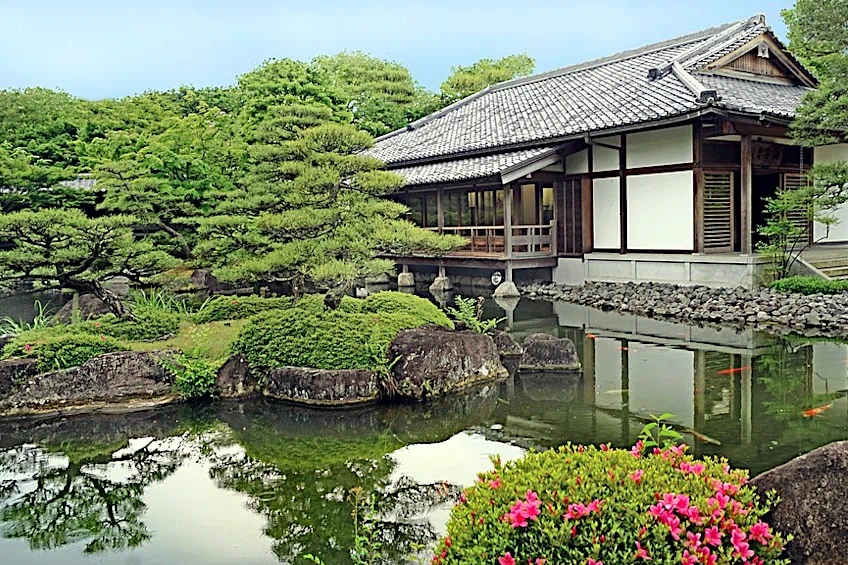 Kôko-En Garden in Himeji, Japan; Jean-Pierre Dalbéra from Paris, France, CC BY 2.0, via Wikimedia Commons
Kôko-En Garden in Himeji, Japan; Jean-Pierre Dalbéra from Paris, France, CC BY 2.0, via Wikimedia Commons
Over 400 years later, stately old Himeji Castle continues to captivate the imagination of visitors in a country known for its ultramodern cities.
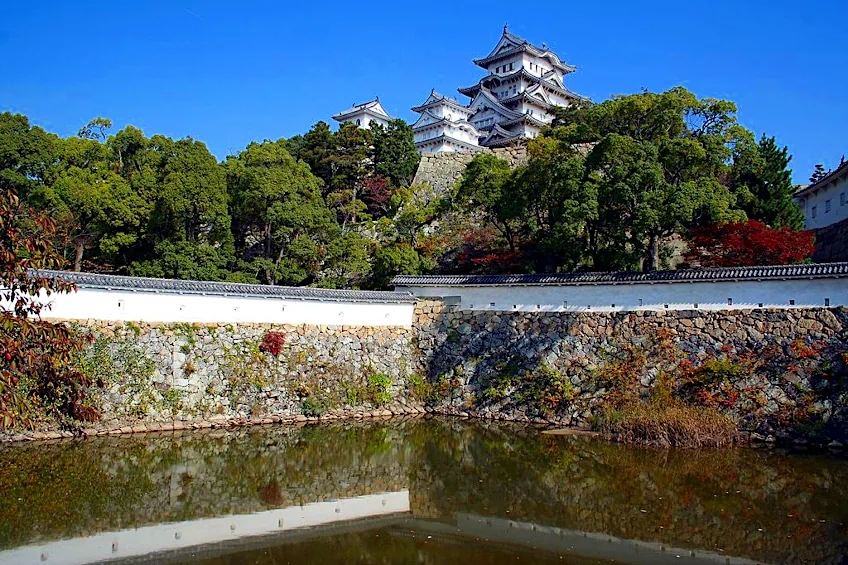 View of Himeji Castle Tower seen from a moat; Corpse Reviver, CC BY 3.0, via Wikimedia Commons
View of Himeji Castle Tower seen from a moat; Corpse Reviver, CC BY 3.0, via Wikimedia Commons
Architecture
Himeji Castle is Japan’s biggest castle. It is a great example of a prototypical Japanese castle building, including many of the protective and architectural aspects that are typical of Japanese castles. Although the curving walls of Himeji Castle are supposed to resemble huge fans, the main materials utilized in the construction are wood and stone. Feudal family crests are set throughout the construction of the castle, representing the different lords that lived there throughout its history.
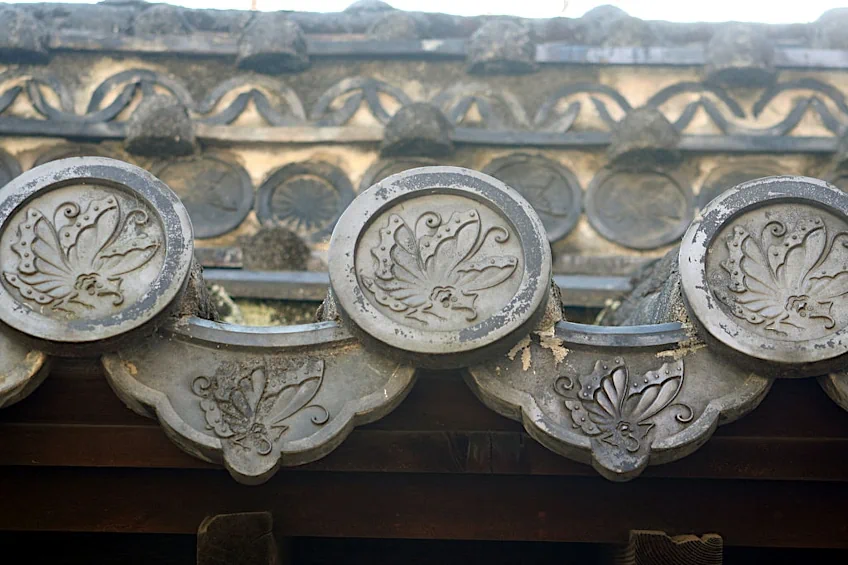 The family crest of Ikeda Terumasa at Himeji Castle; Corpse Reviver, CC BY 3.0, via Wikimedia Commons
The family crest of Ikeda Terumasa at Himeji Castle; Corpse Reviver, CC BY 3.0, via Wikimedia Commons
The castle was built in the Hirayama style. Tsuyama Castle and Matsuyama Castle were both built in the same period and share similar architectural traits. The Himeji castle complex is made up of 83 structures, including gates, storehouses, passageways, and towers.
Defense Structures
The third and fourth floors include “stone-throwing ledges” at the southern and northern windows, where guards could see or throw projectiles at invaders. They also feature small, confined rooms known as “warrior hideouts” where troops might conceal and surprise assailants as they approached the keep. The sixth-floor windows today have iron bars, however, the expansive view from the openings was unhindered during the feudal time. Himeji Castle is home to excellent feudal defense systems. Throughout Himeji Castle, embrasures in the shapes of triangles, circles, squares, and rectangles allowed archers to fire on invaders without exposing themselves to enemy fire.
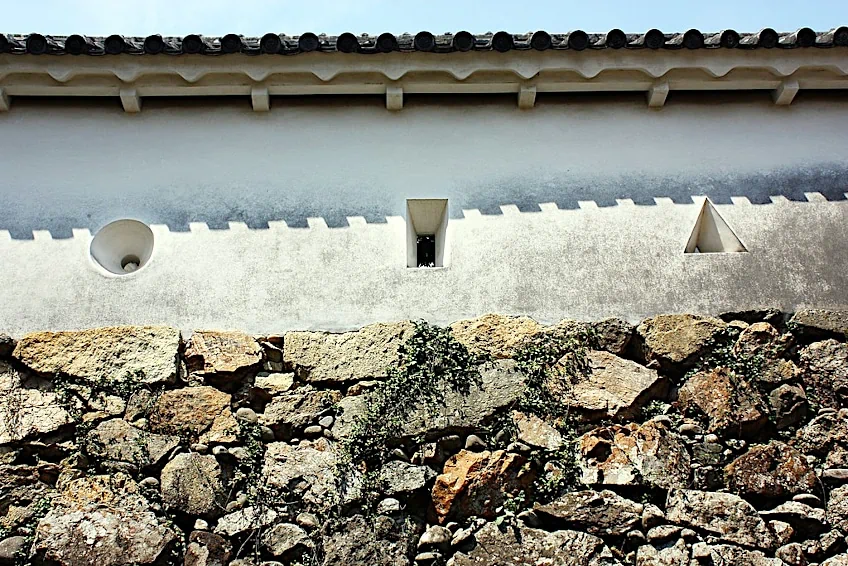 Himeji Castle circular, rectangular, and triangular embrasures; Andrea Schaffer from Sydney, Australia, CC BY 2.0, via Wikimedia Commons
Himeji Castle circular, rectangular, and triangular embrasures; Andrea Schaffer from Sydney, Australia, CC BY 2.0, via Wikimedia Commons
There are around 1,000 of these embrasures in the castle structures that survive today. Angled chutes known as “stone-dropping windows” were also installed at various locations in the castle walls, allowing stones or hot oil to be dropped on the heads of assailants passing beneath, and white plaster was employed in the construction for its ability to resist fire.
The castle complex, notably the Waist Quarter, features a number of warehouses meant to store salt, rice, and water in the event of an invasion. When the complex was in use, a structure known as the Salt Turret was built exclusively for storing salt, and it is believed that it held up to 3,000 bags of salt.
 Buildings in the Himeji Castle complex; Corpse Reviver, CC BY 3.0, via Wikimedia Commons
Buildings in the Himeji Castle complex; Corpse Reviver, CC BY 3.0, via Wikimedia Commons
The complicated tangle of routes leading to the castle’s keep is one of the castle’s most crucial defensive components. The complex’s gates, baileys, and outside walls are designed to confound attacking forces, causing them to spiral around the structure on its route to the keep. The castle pathways sometimes curve back on themselves, making navigating difficult. The direct distance from the Hishinomon Gate to the main keep, for instance, is only 130 meters, while the route itself is 325 meters. The tunnels are extremely steep and tight, making progress much more difficult. This technique allowed invaders to be monitored and shot at from the keep during their long approach, but Himeji Castle was never attacked in this fashion, therefore the system was never tested. Even with the path well indicated now, many people have difficulty traversing the castle complex.
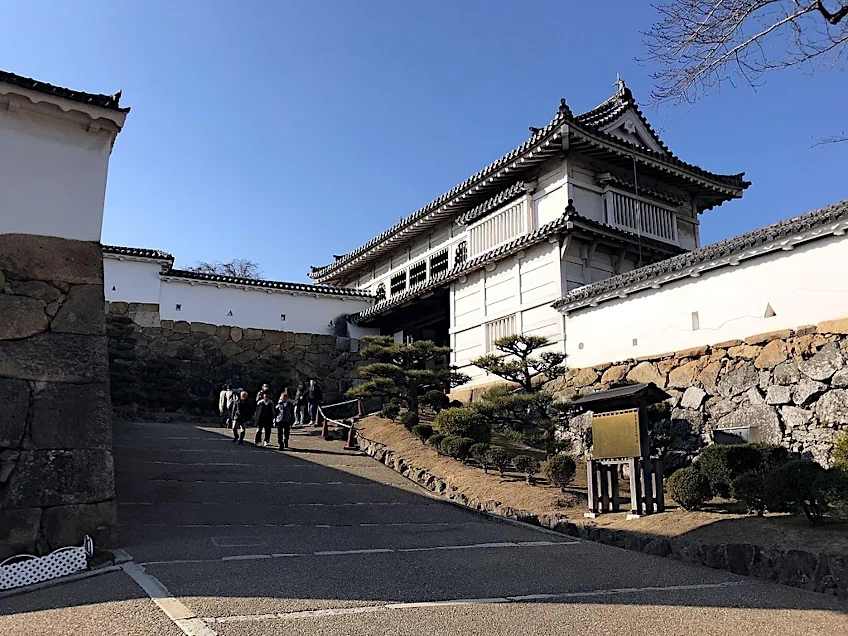 Hishinomon Gate of Himeji Castle; そらみみ, CC BY-SA 4.0, via Wikimedia Commons
Hishinomon Gate of Himeji Castle; そらみみ, CC BY-SA 4.0, via Wikimedia Commons
Inside Himeji Castle
Visitors approach the main keep by a lower-floor entrance and ascend through a succession of narrow, steep staircases. As you rise, each level becomes smaller. The levels are mostly empty, with just a few bilingual placards detailing architectural elements like portholes, rock chutes, and hidden rooms, as well as maintenance attempts throughout the years to maintain the structure. The top floor holds a tiny shrine and allows guests to look in all directions, out over the rooftops, through the maze-like fortifications, and out across the Himeji region. You may also get a close-up look at the fish-shaped roof decorations, which are said to protect against fire.
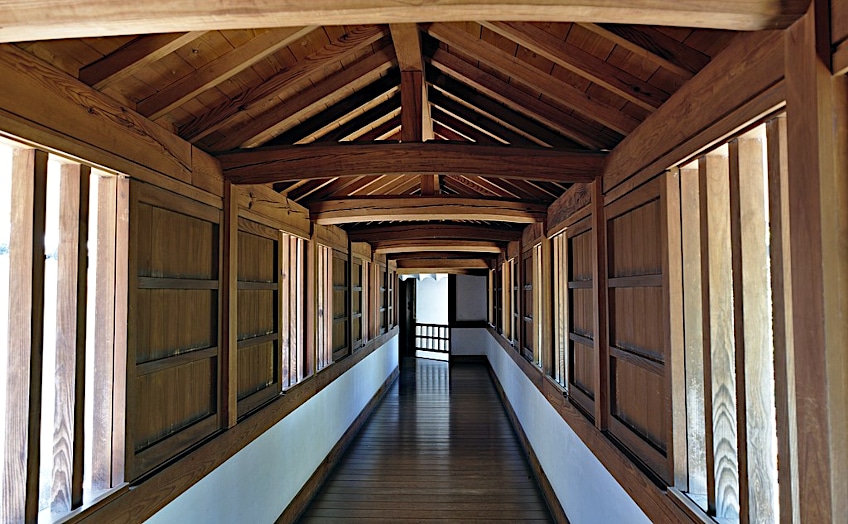 Interior corridor in Himeji Castle; _steffen, CC BY-SA 2.0, via Wikimedia Commons
Interior corridor in Himeji Castle; _steffen, CC BY-SA 2.0, via Wikimedia Commons
Folklore of the Himeji Castle in Japan
During a restoration attempt, the Edo Period castle’s characteristic Kawara ceramic tiles were either restored or replaced with similar reproductions created by local artists to retain the castle’s authenticity. The Japanese think that these tiles safeguard the castle. Aside from their evident ability to counteract the weather, these tiles are said to have supernatural properties in Japanese legend. Onigawaras, a sort of decorative tile shaped like a gargoyle that stands at the end of the ridges on parts of Himeji’s roofs, embellish the Kawara tiles. These menacing-looking animals are meant to ward off evil spirits and safeguard the castle and its inhabitants. Despite this, they have not been able to chase away the ghost who haunts the castle’s hallways. Her name was Okiku.
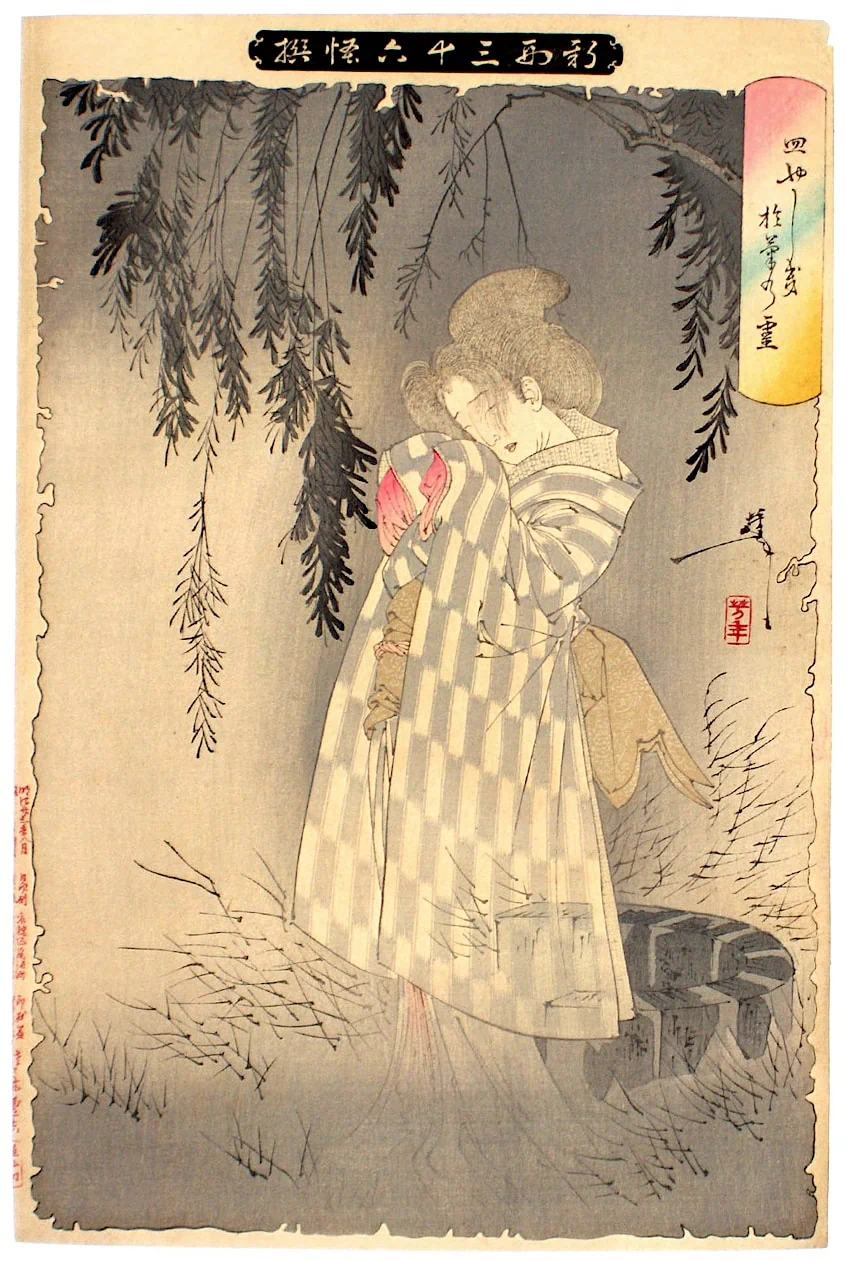 The ghost of Okiku appearing by the well in which her master, Aoyama Tessan, murdered her. From the Thirty-six Ghosts series (1890); Tsukioka Yoshitoshi, Okiku,, Public domain, via Wikimedia Commons
The ghost of Okiku appearing by the well in which her master, Aoyama Tessan, murdered her. From the Thirty-six Ghosts series (1890); Tsukioka Yoshitoshi, Okiku,, Public domain, via Wikimedia Commons
Okiku’s tale is that she was charged with a crime she had not committed and was slain, her body being put into the castle’s well. She has demanded her vengeance by haunting the castle, walking its halls, and lamenting the injustice she experienced. These are two of the tales linked with this massive fortress complex, which dates back to the 14th century.
The Himeji Castle in Japan is the greatest intact instance of early 17th-century castle architecture in the country, consisting of 83 structures with highly advanced defense systems and innovative security measures dating from the Shogun era. It is a woodworking masterpiece that combines purpose and visual appeal, both in its exquisite look, which is united by the white plastered earthen walls, and in the complexity of the interactions between the structure masses and the numerous roof levels. For over 300 years, the castle served as the focal point of a feudal territory, until 1868, when the Shogun was deposed, and a new national government was established.
Frequently Asked Questions
What Was the Purpose of the Himeji Structure With Moats Around It?
The Himeji Castle in Japan was created in the mid-14th century as a defensive construction to keep possible assailants at bay. Moats were erected around Japan’s Himeji Castle for a variety of reasons, one of which was obviously for defensive purposes. Moats were commonly utilized in medieval castles to secure the fortress from prospective invaders. Himeji Castle’s moats were built to be broad and deep, making it challenging for assailants to penetrate the castle walls. Another motive for Himeji Castle’s moats was to supply water for the castle’s occupants. The moats held water that could be utilized for drinking, boiling, and other functions.
What Is the Himeji Castle’s Interior Like?
The Himeji Castle’s main keep is five floors tall and houses a variety of halls and chambers. Inside Himeji Castle, guests will see displays and exhibits highlighting the castle’s history and importance in Japanese history. There are also some traditional Japanese chambers, such as the main hall, that were once utilized for significant rituals and meetings. Tatami mats, sliding doors, as well as other classic Japanese architectural features adorn these rooms. Guests may also visit the courtyard and gardens of the Himeji Castle in Japan, which provide stunning landscaping and vistas of the surrounding countryside.

I am deeply passionate about history and am constantly fascinated by the rich and complex stories of the past. As the editor-in-chief of learning-history.com, I have the opportunity to share this passion with a wide audience through the creation and distribution of engaging and informative content about historical events, persons, and cultures. Whether it’s through writing articles and blog posts or creating videos or podcasts, I strive to bring the past to life in a way that is both accurate and enjoyable. My expertise in history, combined with my strong writing and communication skills, allows me to effectively communicate complex historical concepts and make them accessible and interesting to a wide range of readers. I am truly grateful for the opportunity to share my love of history with others through my work on learning-history.com.

